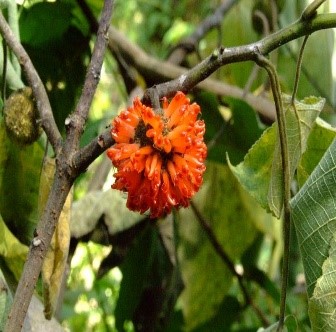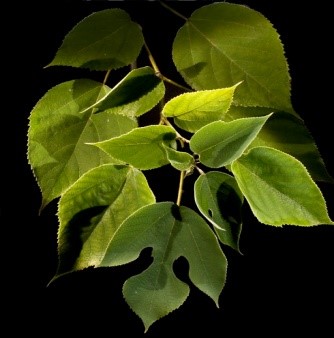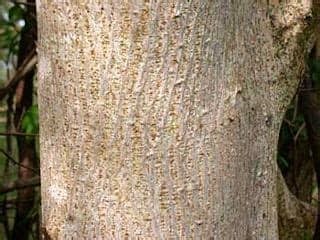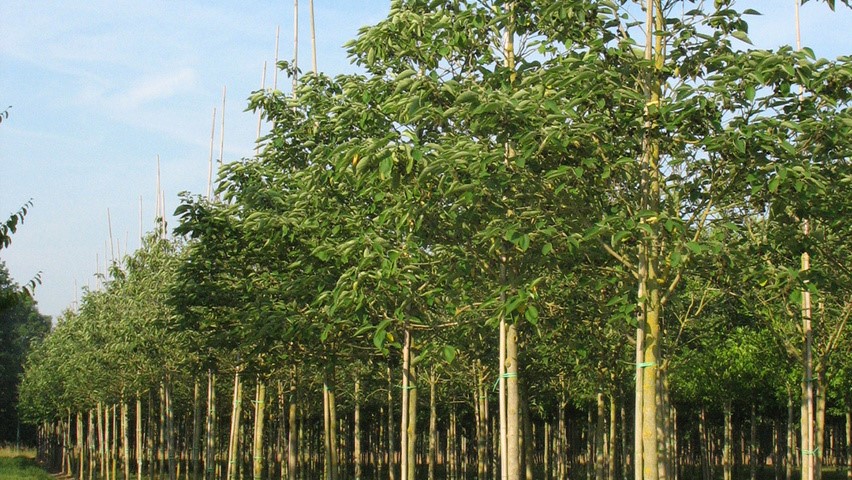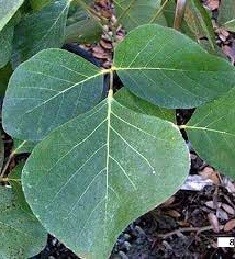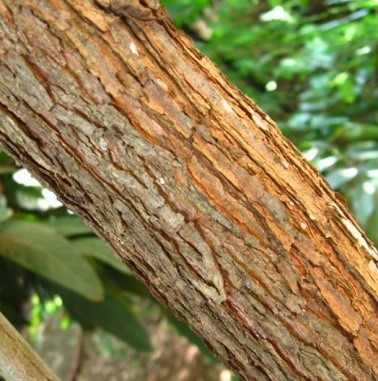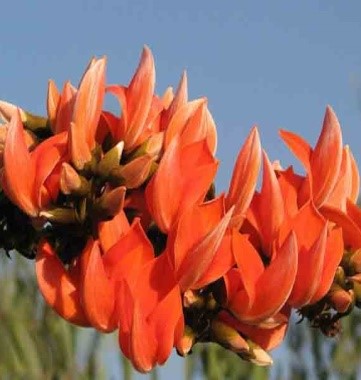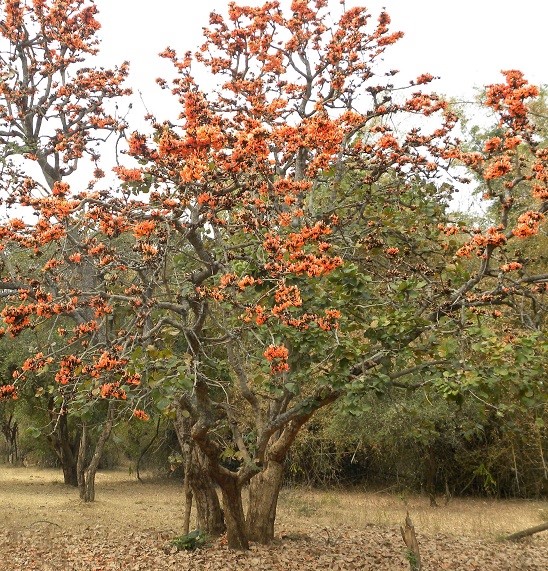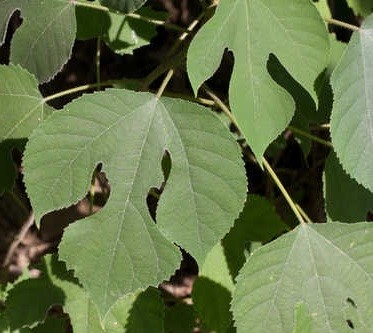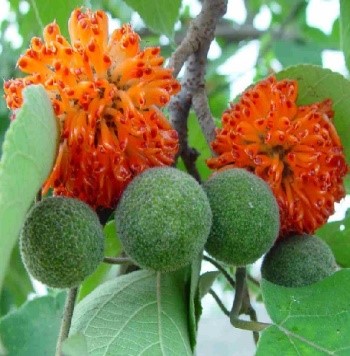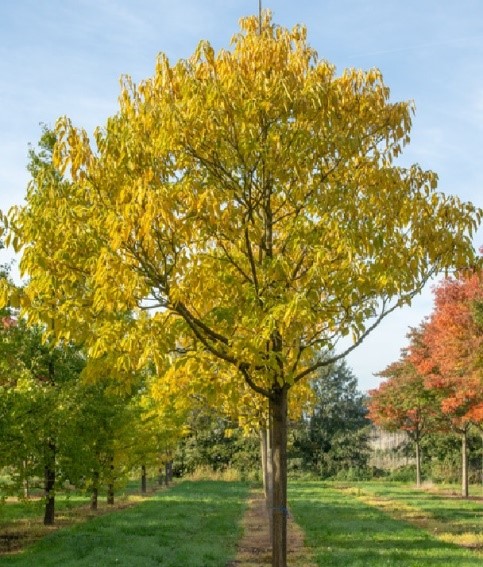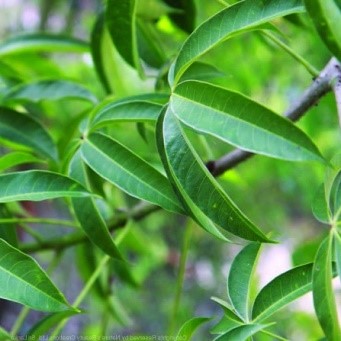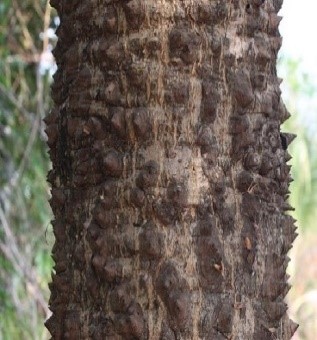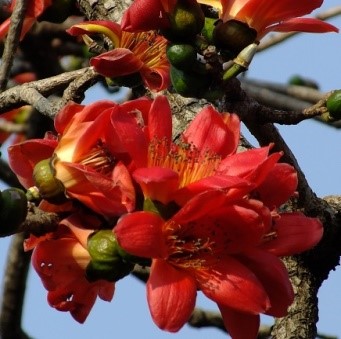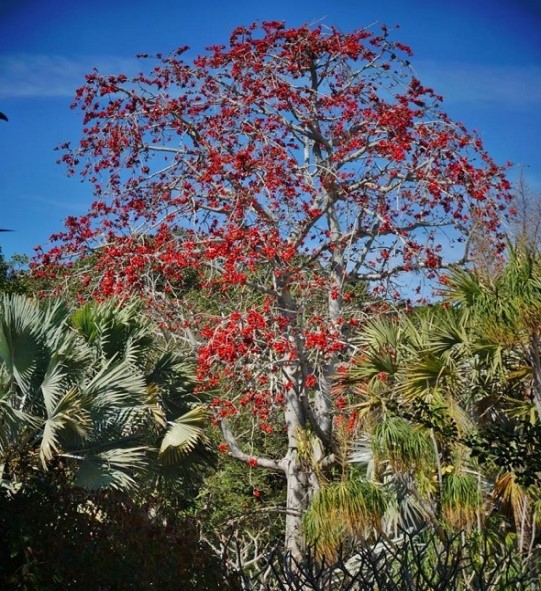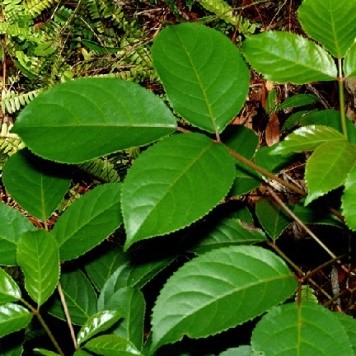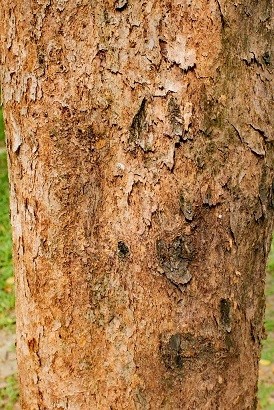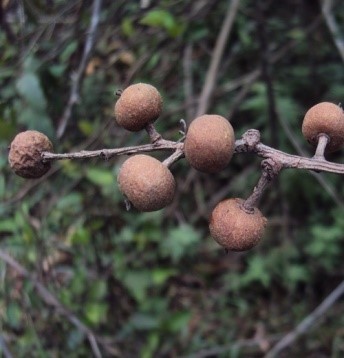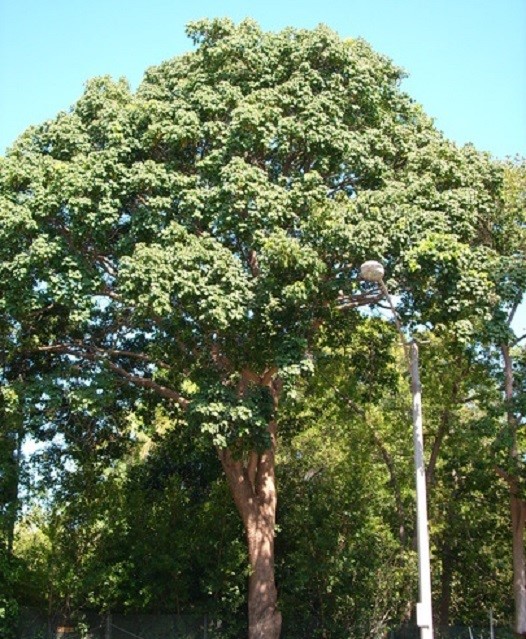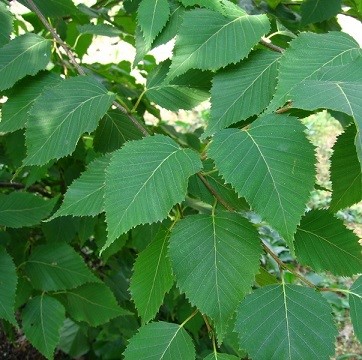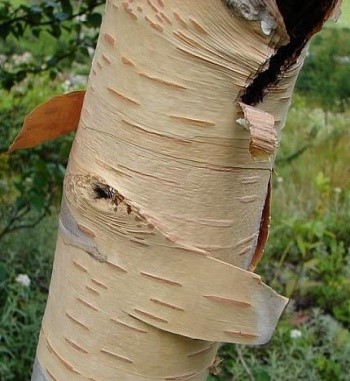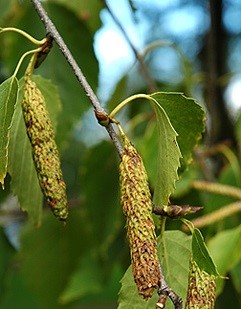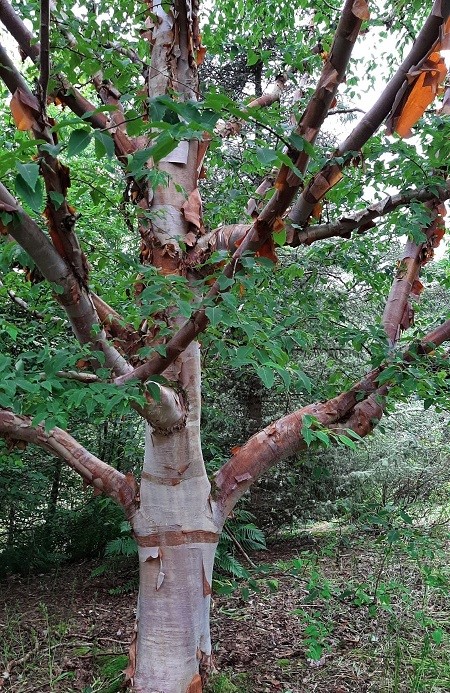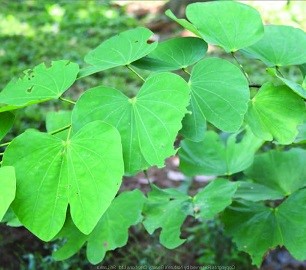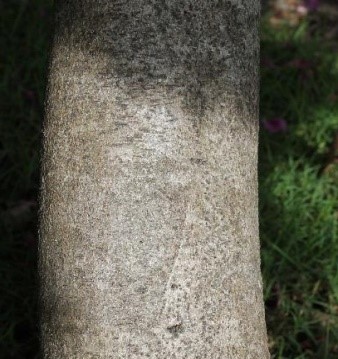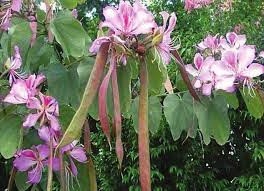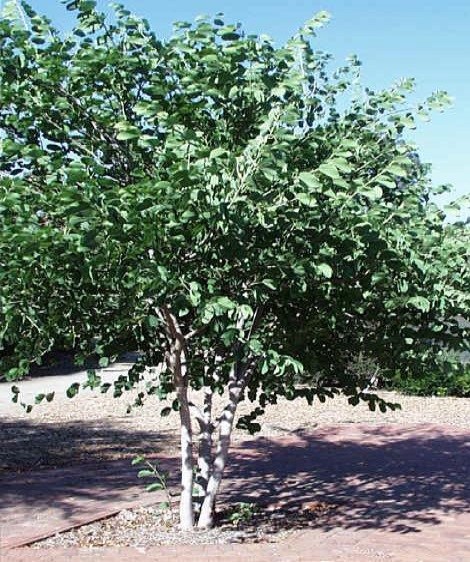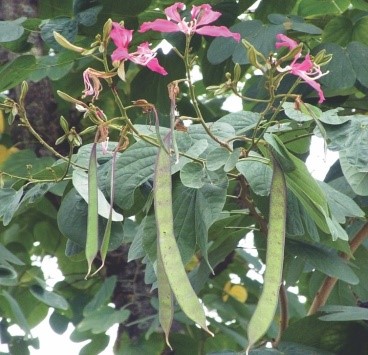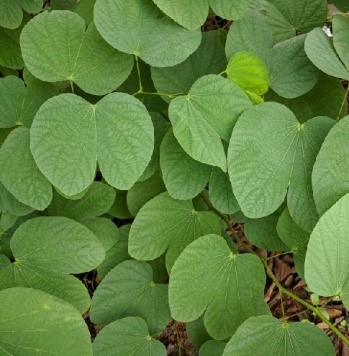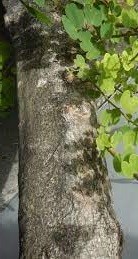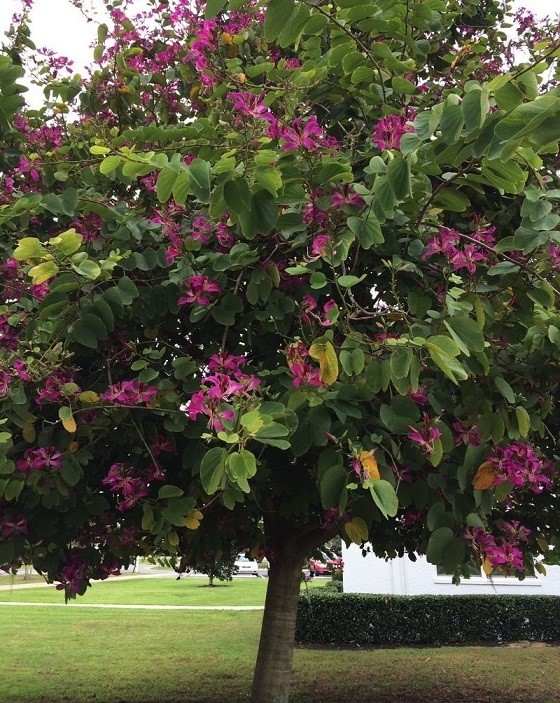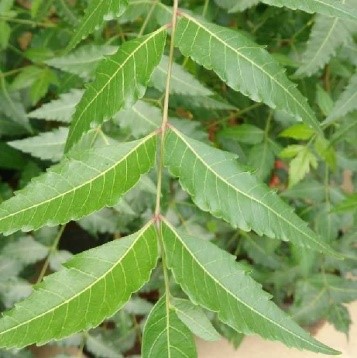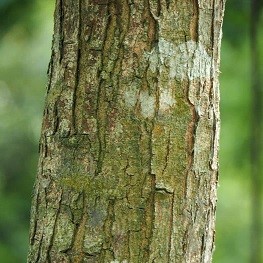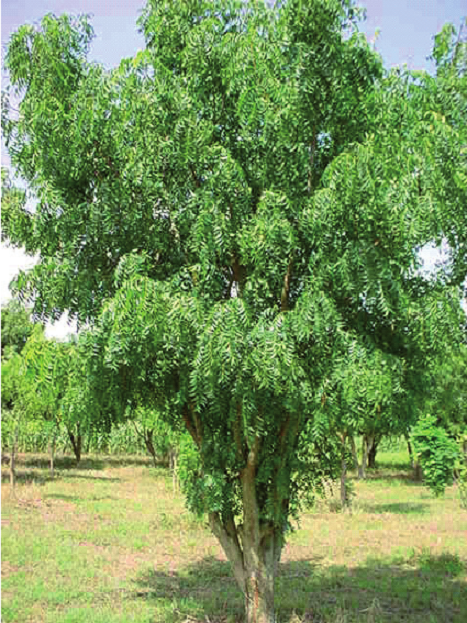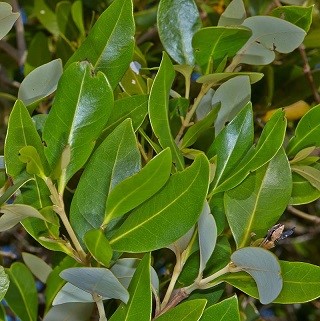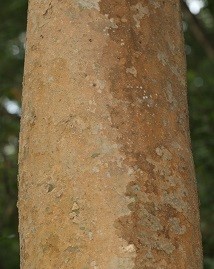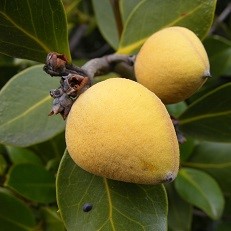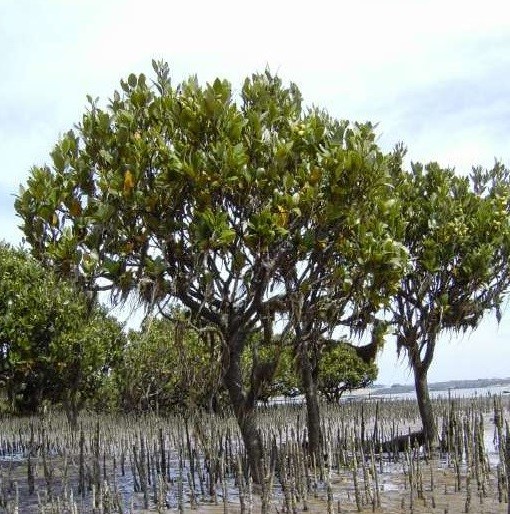Trees of Pakistan
Broussonetia papyrifera L.
Family Name: Moraceae
Local Name : Gul toot/ Jangli toot
English Name : Paper Mulberry
Description : This plant is a deciduous shrub or tree that generally grows up to the height of 20 m, sometimes it reaches to the height of 35 m. The leaves of the tree are densely grey, opposite, alternate. The leaves are often lobed and having sharply toothed leaf margins. The shape of the leaf base is round to heart shaped. Male and female flowers are separately present on the plant that appears in the spring season. Male flower is composed of many individual flowers and are 4 to 8 cm in diameter, and female flowers are 1 to 2 cm in diameter and are globular. Fruits of the plant are orange to reddish purple in colour. Each fruit in a cluster is a drupe.
Butea frondosa Koeing EX Roxb
Family Name: Leguminosae
Local Name : Dhak
English Name : Flame of the Forest
Description : A small or medium sized deciduous tree with a crooked trunk and large irregular branches. The leaves are compound with three leaflets. The leaflets are hard, rigid and leathery smooth on top with silky hairs on the underside. The bark is moderately thick, very fibrous and grey to light brown in color. The flowers occur when the tree is leafless, March to April, and are in hanging bunches that are between 10 to 18 cm long. Each flower is small, 3 to 5 cm long, bright red tinged with orange. The pods mature in May and are long, thin and flat 10 to 20 cm long. Each pod contains only one seed. The wood is susceptible to boring insects. It will reproduce from seed or by vegetative means. Direct seeding has been reported to be more successful than planting. A moderately fast-growing t
Broussonetia papyrifera (L) L. Hertit. Ex Vent.
Family Name: Moraceae
Local Name : Jungli Toot, Kaghzi Toot
English Name : Paper Mulberry
Description : A medium, deciduous tree. 3 to 12 m tall. The crown is spreading and rounded. The leaves are simple, but varied in shape, 5 to 20 cm long. The bark is light grey with shallow ridges or fissures. It is dioecious. The reddish yellow male flowers are in small catkins. The reddish to orange red female flowers are in solitary, rounded heads 2 to 3 cm in diameter, and occur between March and August. The fruit is a berry containing 5 to 15 small seeds which ripen between May and September. It coppices easily and aggressively occupies shady sites. It is relatively insect and disease free. It is reproduced both from seed and by vegetative means. The seeds are small. Birds eat the berries and hasten the tree's rapid spread. It grows very fast, 1 m a year in height growth is not uncommon. D
Bombax cieba Linn.
Family Name: Silk Cotton Tree
Local Name : Simal
English Name : Silk Cotton Tree
Description : he tree is native to Pakistan, India and Nepal. In Pakistan it in the sub-Himalayan tract from Hazara eastward. It is planted on the plains, in gardens and along roadsides. An intolerant tree that does not do well in shade. It grows on a variety of soils and sites; however, it grows best on deep alluvial soils that are well drained. It requires a precipitation zone of 750 to 1700 mm/yr or more. It prefers a sub-humid warm sub-tropical to tropical monsoon climate with a temperature range of 0 to 40°C at elevations up to 1000 m. It is in demand as a commercial timber tree. It can be planted on arid and semi-arid sites with irrigation.
Bischofia javanica Blume
Family Name: Euphorbiaceae
Local Name : Irum, Underikhni
English Name : Bishop Wood
Description : A large, evergreen or deciduous tree 15 to 17 m tall and with a diameter of 0.6 to 0.8 m. The crown is large, oval and dense. The leaves are compound occurring in threes with the leaflets 7.5 to 5.7 cm long and 3 to 6 cm wide. The bark is thick and dark grey. It is dioecious. The male flowers are in long bunches and crowded. The female bunches are open. The flowers occur in March. The fruit is a small capsule 5 cm in diameter which contains 3 to 5 seeds. The capsules mature in May. There are no known insects or disease problems of significance. It is reproduced mainly from seed. Hundreds of seedlings can be seen around a tree. Sapwood is light green to reddish brown; heartwood is red to dark reddish brown or chocolate brown having specific gravity of 0.74 and a calorific value of
Betula utilis D. Don
Family Name: Cupuliferae
Local Name : Bhoj Patra, Zhonzree
English Name : Birch
Description : A small deciduous tree or shrub. The leaves are silky, soon becoming glabrous, 5 to 10 cm long, ovate and acute serrate. The bark is conspicuously white, peeling off in large papery layers. The male flowers are catkins, and the female flowers are spikes. It flowers in May. The fruit is a winged nut. It reproduces by seed and by suckers. Growth is slow. Exists as individual trees rather than stands so browsing by livestock tends to be a problem. Bark is peeled off and used for writing paper. Even grained having Pink or white sapwood
Bauhinia variegata Linn
Family Name: Leguminosae
Local Name : Kachnar, Kaliar
English Name : Mountain Ebony, Camels’ foot tree
Description : A small deciduous tree. The leaves are single (not compound). Each leaf is divided into two pointed lobes by a cleft that goes one third of the way down the leaf. The leaves are heart shaped and vary in five from 7 to 15 mm in diameter. The bark is grey with vertical cracks and the young branches are slightly hairy. The flowers are large, pink to white, fragrant and bloom between March and April. The flowers are formed on the upper leafless branches. The pods are flat, thick, curved and pointed. They vary in length from 15 to 30 cm. Pods mature during the rainy season. Small tree it is relatively fast growing. Height growth of up to a meter a year and diameters of 15 cm in 8 years have been observed. It can be regenerated by seed or by vegetative methods. Seed can be successfull
Bauhinia purpurea Linn
Family Name: Leguminosae
Local Name : Gulabi Kachnar
English Name : Purple Bauhinia
Description : A small evergreen tree. The leaves are single (not compound). Each leaf is divided into two pointed lobes by a cleft that goes halfway down the leaf. The leaves are heart shaped and vary in size from 7 to 15 mm in diameter. The bark is dark grey or brown and the young branches are covered with short, stiff hairs. The flowers are pink, lilac to purple in color, fragrant and bloom between September and November depending on geographic location. The pods are flat, thick, slightly curved and pointed. They vary in length from 15 to 30 cm. Pods mature between January and March. There are minor problems with defoliating insects. It can be regenerated by seed or vegetative methods. Seed can be successfully stored for a year if seed is protected from seed borers. The wood is soft and ligh
Azadirachta indica (L) A. Juss.
Family Name: Meliaceae
Local Name : Neem, Nim
English Name : Margosa Tree
Description : A medium to large, usually evergreen tree, 12 to 25 m tall with a diameter of 0.57 to 0.86 m. The crown is broad, dense. Spreading and rounded. The leaves are compound, with the leaflets 2.5 to 7 cm long, and lance shaped with long points and 4 to 7 pairs of leaflets on each leaf. Edges of the leaflets are toothed. The bark is dark grey, lightly furrowed and broken in irregularly shaped scales. The flowers are small, white and with the fragrance of honey, occur in dense bunches and appear between March and April. The fruit is a fleshy drupe containing one seed enclosed in a hard shell. Each fleshy drupe is greenish, oblong 15 to 2 cm long. The drupe is yellow when fully ripe. The fruiting period is June to August. It coppices easily and has few insect and disease problems. It is
Avicennia marina (Forssk.) Vierh.
Family Name: Avicenniaceae
Local Name : Timar
English Name : Tivar
Description : A small, shrub like, evergreen tree 1 to 3 m tall, with stem diameters of 25 to 30 cm. Leaves are simple. 3 to 8 cm long and 1.5 to 3.5 cm wide. It has pneumatophores (appendages that look like knees supporting the bole). The flowers are in tightly packed heads, are dungy yellow with an orange throat and are quite fragrant. It flowers in February to June. The fruit is 12 to 18 mm long and 10 to 12 mm wide, usually with only one seed. The fruit matures between May and July. Artificial regeneration may be needed to preserve the tree in Pakistan. Profuse natural regeneration can be seen in protected mud flats in the coastal belt. Grains have alternate layers of pore bearing tissue and loose large cell tissue without pores. It has no known insects or pest problems. It can be reproduc
